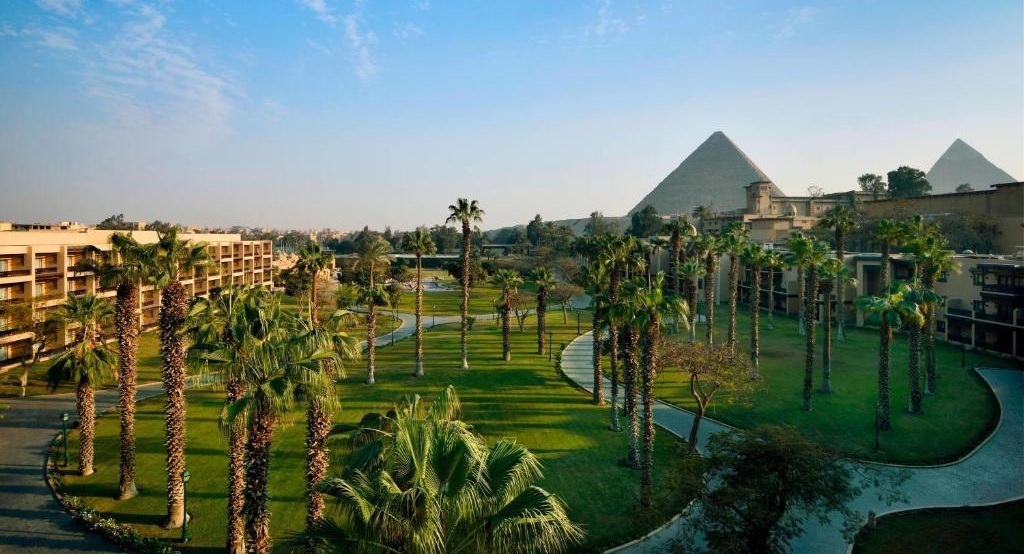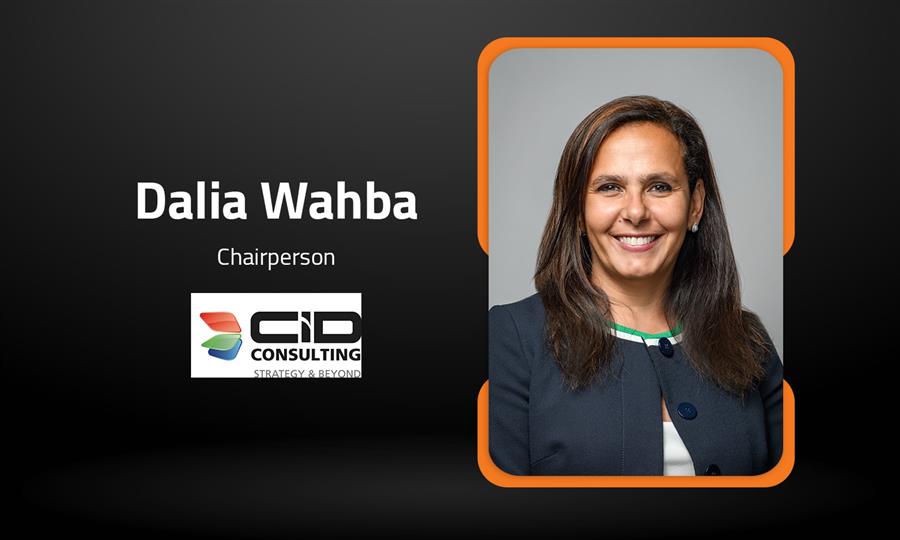Zeitoun Architects: Three-Generation of Architectural Excellence
Updated 10/17/2023 8:00:00 AM
Arab Finance: As the design and architecture market in Egypt continues to evolve, there is a growing emphasis on sustainable and environmentally friendly designs. Architects are expected to stay updated with industry trends and leverage technology to streamline processes. Zeitoun Architects, a 60-year-old architectural design firm, has been at the forefront of this market with a design philosophy influenced by nature, craftsmanship, and simplicity.
That is why Arab Finance interviewed Khaled Zeitoun, CEO of Zeitoun Architects and Planners, who shared the company’s history and unique projects and discussed the architect’s role in creating sustainability.
1-Can you tell us about the history and background of Zeitoun Architects and Planners?
Zeitoun Architects is a three-generation architectural design firm. It started in 1949 when the founder, Salah Zeitoun, together with his partner at the time, Mostafa Shawky, established the firm. My grandfather Salah Zeitoun had just returned from the US after a two-year fellowship at the Frank Lloyd Wright Foundation, a period that shaped much of the principles of his design and laid the blueprint for the firm’s design philosophy up until today. These principles included an emphasis on nature, craftsmanship, and simplicity. Among some of the key projects designed by Architect Salah Zeitoun were the Cairo International Airport in 1954, the Institute of Building Research, Hamam and Halab Syria Hospitals, the open-air and theater arena at Cairo Stadium, the Yemen Central Bank, the Residence of the Egyptian President in 1984, and many more.
Then came the second generation, when architect Ahmed Zeitoun graduated from Cairo University in 1971. After practicing in various architectural offices in Denmark and Finland, he returned to Egypt to work with architect Salah Zeitoun. Among some of his famous design projects are the October Hills Compound, Wadi El Nahkil Compound, Lagoona Taba Resort, the Gezira Club Squash Complex and Gezira Club Mater Plan, Siag Taba Resort, IBM offices, and many more.
Finally, the third generation of the Zeitoun family kept the tradition when I graduated from the University of Miami in 2000, and after working for four years in several firms in Miami specializing in urban design and residential projects, I returned to Egypt to join Zeitoun Architects in 2004 to continue creating innovative contemporary architectural designs.
The Zeitoun firm has earned a reputation for designing and supervising the construction of landmark buildings throughout Egypt, Africa, and the Middle East. The firm was also engaged in designing several large projects in conjunction with international firms from Sweden, Denmark, Finland, the US, England, France, and Italy.
2-What sets Zeitoun Architects apart from its competitors, and how does the company differentiate itself in the architecture sector?
Founded more than 60 years ago, the Zeitoun firm has a vast wealth of experience and knowledge, ranging from innovative design principles to client expectations and client management to dealing with governmental agencies and building codes. Whether small or mega projects, we provide a boutique service, paying great attention to the personal feelings and the relationships with all our clients.
In addition, Zeitoun Architects has a track record of meeting the challenges of fast-track schedules, which enables our clients to save both time and money through the timely delivery of our projects. Our process and experience ensure a well-managed project from conception to occupancy and beyond.
3-What are some of the company's recent projects? And what were the challenges and successes associated with them?
In the past 5–6 years, Zeitoun Architects has focused on the education sector and has quickly become a pioneer in the design of schools all across Egypt. It is not a new field for Zeitoun Architects, as architect Salah Zeitoun designed the Cairo American College (CAC) in Maadi in 1966.
Recently, we completed Regent British School in New Mansoura City, as well as two international schools for GEM education in conjunction with the Sovereign Fund of Egypt (TSFE) at the Cosmic Village in Cairo.
The challenges with these projects are primarily time constraints, as the school is expected to open in the school calendar year; therefore, getting all the agency drawing approvals in time without jeopardizing any of the client's requirements and demands is critical.
Also, the coordination between the contractor, owner, and school operator takes a lot of finesse from the architect. All three schools have opened their doors to students on the scheduled dates, so this brings great satisfaction and success to our firm.
4-Zeitoun Architects works on both commercial and residential projects. How do the profit margins and opportunities of commercial projects compare to those of residential projects in the construction industry?
Profit margins always lie in the scope and scale of the project, more than the sector itself. Both types of projects provide different challenges and demands from the architect. I enjoy working on both commercial and residential projects equally.
5-How does Zeitoun Architects and Planners approach sustainability and environmental responsibility in its projects?
At Zeitoun Architects, we put great effort into practicing green architecture. This type of design takes into account not only the initial construction of a building but also its long-term maintenance and operation. There are many factors to consider when pursuing sustainable design, including energy efficiency (solar power), water conservation, indoor air quality, material selection, and site selection. The architect’s role is basically that of preserving, improving, and creating a quality-built environment under definite conditions. We also seek to create structures in harmony with the landscape around them.
In addition, the architect's role is to educate the client and sell the cause of sustainability. As stewards of the built environment, architects have the power to create sustainable, healthy, and livable spaces that promote the well-being of people and the planet.
6-How does Zeitoun Architects leverage technology to stay updated with the latest trends in the industry? And what do you think of those trends as an expert architect?
It is no secret that architecture and technology have a close relationship. To create innovative buildings and spaces, architects must be well-versed in both the history of technology and the latest advancements.
In today's fast-paced architectural industry, leveraging technology has become paramount to staying competitive and enhancing productivity. By embracing cutting-edge tools and software, architects can streamline their processes and deliver projects more efficiently and effectively. Our expert team leverages the latest industry trends and best practices to create innovative solutions that prioritize our clients’ needs and enable clients to visualize projects and further edit and revise without adding additional costs or losing time.
There are many ways in which technology has had a significant impact on architecture. New technologies have allowed for more creativity and flexibility in design, as well as improved safety and functionality. Some of these tools are: Rendering and Visualization, Building Information Modeling (BIM), Smart Construction Materials and Methods, and finally Augmented Reality.
I believe all those tools have facilitated the architect's jobs and have made the communications with the client and the expectations of the client much more tangible.
7-What are the company’s long-term future plans? And do you consider expanding regionally?
Zeitoun Architects' future plans are to continue focusing on the educational and residential markets, introducing new innovative design concepts in Egypt and overseas. We are constantly expanding our array of services to better cater to our clients’ needs. Sustainable architecture will also be at the heart of our upcoming projects.
Moreover, Zeitoun Architects has recently partnered with Two Spatial, a geographical integrated solutions (GIS) company that specializes in data acquisition and consulting in GIS asset management. Our goal is to provide our clients with a comprehensive array of services related to the architectural field in Egypt and hopefully in the MENA region. We also look forward to other collaborations with companies that provide other value-added services to our clients.
8-Finally, how would you describe the construction and architecture market in Egypt, especially in light of the recent increase in all raw materials?
The construction and architecture market in Egypt is massive and highly competitive. Egyptians have always seen the building industry as a safe shelter for their wealth. For most Egyptians, investing in real estate has long been seen as a haven due to its consistent value growth, which is reflected in the real estate markets.
From an architectural perspective, the level and sophistication of designs and finishing in Egypt have improved tremendously in the last ten years. I believe social media has also helped in that area, with people being exposed to and influenced by modern ideas and designs.
On the other hand, the recent increase in raw materials has created uncertainty about the future of the market and strongly affected investors, especially foreign investors. Going forward, it is important to leverage the use of local products and materials, given the current constraints on imports and the availability of interesting local products.
I believe the architect today has a bigger role, as architecture is problem-solving. So, it is the role of the architect today to be agile, adapt to the volatile market prices, and work within the current parameters while staying true to his design principles and ideas and protecting his clients' needs and interests.
Related News










